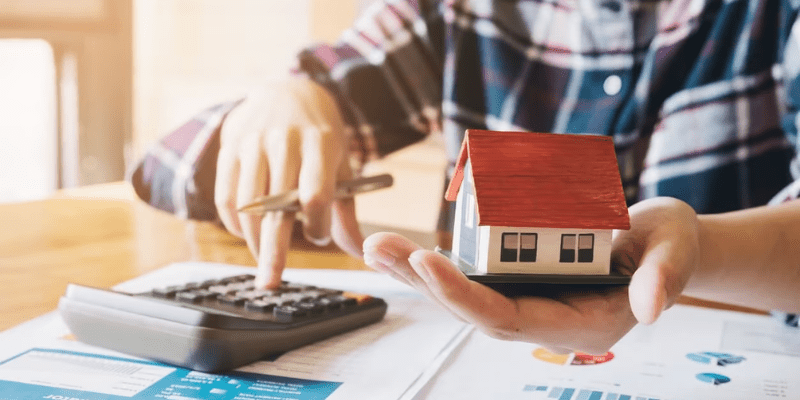In the dynamic world of personal finance, understanding how to optimize your largest liabilities, such as a mortgage, is paramount to achieving financial freedom. For many homeowners, refinancing their mortgage can be a powerful strategy to reduce costs, access equity, or simply achieve more favorable loan terms. However, a common question often arises: how long after buying a house can I refinance? At Mnewso, we understand that this decision is not just about timing; it’s about strategic planning, market awareness, and aligning your mortgage with your evolving financial goals. This article delves into the critical factors that determine when you can and should consider refinancing, providing the detailed analysis you need to make informed choices.
Understanding Refinancing: A Strategic Financial Tool

Refinancing your mortgage involves replacing your existing home loan with a new one. This new loan can come with different terms, interest rates, or even a different loan type, all designed to better suit your current financial situation. The core objective of refinancing is typically to improve your financial standing, offering several potential benefits. These can include securing a lower interest rate, which directly translates to reduced monthly payments and significant savings over the life of the loan.
Beyond just lowering your rate, refinancing can also be a strategic move to shorten your loan term, allowing you to pay off your home faster and accumulate equity more quickly, albeit potentially with higher monthly payments. For those with an adjustable-rate mortgage (ARM), refinancing to a fixed-rate loan can provide stability and predictability in monthly housing costs, shielding you, a cash-out refinance allows homeowners to tap into their home equity, converting a portion of their home’s value into liquid cash that can be used for significant expenses like home improvements, debt consolidation, or other investments. Conversely, a cash-in refinance involves making a lump-sum payment to reduce the loan-to-value (LTV) ratio, potentially securing a lower interest rate and reducing the overall debt burden. Regardless of the specific goal, understanding the mechanics of refinancing is the first step toward leveraging this powerful financial tool.
The Critical Question: How Long After Buying a House Can I Refinance?
The waiting period, often referred to as a “seasoning requirement,” is a crucial aspect to consider when contemplating a mortgage refinance. Lenders and loan programs typically impose these waiting periods to ensure that borrowers have established a stable payment history and to mitigate risks associated with rapid, repeated refinancing. The exact duration of this waiting period can vary significantly based on the type of loan you currently hold and the nature of the refinance you are seeking. While some conventional loans may allow immediate refinancing for rate-and-term adjustments, other loan types, particularly those backed by government agencies, have more defined waiting periods.
Generally, most lenders will require at least six months of ownership and a history of on-time payments before considering a refinance. This window allows for a clear financial track record to be established. Understanding these specific seasoning requirements for different loan products is essential for any homeowner asking how long after buying a house can I refinance.
Conventional Loan Seasoning
For conventional loans, which are not insured by the federal government, the rules regarding seasoning can be more flexible, but lender-specific policies often come into play. If your conventional loan is backed by Fannie Mae or Freddie Mac, a rate-and-term refinance might be possible immediately after closing on your original home loan. This means you could potentially secure a better interest rate or adjust your loan term almost right away if market conditions are favorable.
However, it is common for many lenders to impose their own “seasoning period” of at least six months before they will allow a refinance, particularly if you are seeking a cash-out refinance. This six-month period helps lenders assess your payment consistency and the stability of your home’s value. If you plan a cash-out refinance with a conventional loan, you typically need at least 20% equity in your home, in addition to meeting the six-month waiting period. Shopping around with different lenders can sometimes help bypass a specific lender’s seasoning requirement for rate-and-term refinances if you are not seeking cash out.
FHA Loan Seasoning
FHA loans, insured by the Federal Housing Administration, have specific seasoning requirements designed to protect both the borrower and the lender. The timeline for FHA refinancing depends on whether you are pursuing a Streamline Refinance, a standard Rate-and-Term Refinance, or a Cash-Out Refinance. For an FHA Streamline Refinance, which offers a simplified process with less documentation, you must have made at least six monthly payments on your current FHA mortgage, and at least 210 days must have passed since the closing date of your original loan.
For a standard FHA Rate-and-Term Refinance, a waiting period of at least six months is generally required, coupled with a solid payment history showing no more than one late payment in the past year. If your goal is an FHA Cash-Out Refinance, the seasoning period is typically more stringent, requiring at least 12 months of ownership and occupancy as your primary residence. This ensures you have built sufficient equity and demonstrated long-term commitment to the property.
VA Loan Seasoning
VA loans, backed by the Department of Veterans Affairs for eligible service members, veterans, and their spouses, also have specific seasoning requirements. For both the VA Interest Rate Reduction Refinance Loan (IRRRL), often called a VA Streamline Refinance, and a VA Cash-Out Refinance, the waiting period mandates that at least 210 days have passed from the original loan closing date or that you have made at least six on-time monthly payments, whichever is later.
This ensures a stable payment record before a new VA-backed loan can be issued. While lenders may have their own additional guidelines regarding credit score or debt-to-income (DTI) ratio, the VA’s seasoning rules provide a clear minimum timeframe. It is crucial for VA loan holders to track this period closely when considering how long after buying a house can I refinance to take advantage of potentially lower rates or access home equity.
The Net Tangible Benefit Rule
Beyond specific seasoning periods, another vital consideration for refinancing, particularly with FHA and VA loans, is the “Net Tangible Benefit” rule. This regulation ensures that the refinance transaction provides a clear financial advantage to the borrower, preventing predatory lending practices like “loan churning.” A net tangible benefit can manifest as a lower interest rate, a reduced monthly payment, a shorter loan term, a conversion from an adjustable-rate mortgage to a fixed-rate mortgage, or the ability to cash out equity for a legitimate purpose such as debt consolidation or home improvements.
For FHA Streamline refinances, for example, a net tangible benefit is often defined as a reduction in the combined interest rate and/or mortgage insurance premium by at least 0.5%, or a 5% reduction in the principal, interest, and mortgage insurance payment. This rule acts as a consumer protection mechanism, ensuring that the costs of refinancing are justified by the financial advantages gained, and is a key component in determining if and when a refinance is truly beneficial.
Beyond Time: Evaluating the Financial Landscape

While seasoning requirements provide a foundational timeline, the decision of how long after buying a house can I refinance extends far beyond simply waiting out a period. A comprehensive financial analysis involving market conditions, personal credit health, and a meticulous evaluation of costs versus benefits is essential. Ignoring these factors can transform a potentially advantageous move into a costly mistake. Disciplined investors understand that timing a refinance optimally involves more than just eligibility; it requires a strategic alignment of personal finance with prevailing economic forces.
Interest Rate Environment
The prevailing interest rate environment is arguably the most significant factor influencing a refinance decision. A drop in market interest rates since you originated your current mortgage is a primary driver for many homeowners to refinance. Historically, many financial experts suggest that a refinance becomes worthwhile when you can reduce your interest rate by at least 0.5% to 1%. Such a reduction can lead to substantial monthly savings and lower overall interest costs over the life of the loan.
However, even smaller drops of 0.5% could be beneficial, especially if you plan to stay in your home for an extended period, allowing more time to reach your breakeven point. Economic indicators such as inflation reports (CPI) and actions by the Federal Reserve, like changes to the federal funds rate, directly impact mortgage rates. Keeping a close watch on these macroeconomic trends, as Mnewso consistently emphasizes, allows you to anticipate opportune moments for a refinance.
Your Personal Financial Health
Just as with your initial mortgage application, your personal financial health plays a crucial role in qualifying for a refinance and securing the best possible terms. Lenders will thoroughly review several aspects of your financial profile:
- Credit Score: A strong credit score is paramount. Lenders offer the most competitive interest rates to borrowers with excellent credit, typically a FICO score of 780 or higher for conventional loans, with a minimum of 620 usually required. An improved credit score since your initial mortgage can significantly enhance your refinancing prospects.
- Debt-to-Income (DTI) Ratio: Your DTI ratio compares your total monthly debt payments to your gross monthly income. Lenders use this to assess your ability to manage additional debt. While some loan types allow DTI ratios as high as 45%, most prefer a lower ratio, typically in the 36% to 41% range. A lower DTI ratio signals lower risk to lenders.
- Home Equity: The amount of equity you have in your home, which is the difference between its current market value and your outstanding mortgage balance, is a critical factor, especially for cash-out refinances. Most lenders require a certain level of equity, often at least 20%, to approve a cash-out refinance or to remove private mortgage insurance (PMI). Building equity through consistent mortgage payments and home appreciation strengthens your position.
Ensuring these financial metrics are robust before applying can significantly improve your chances of approval and help you lock in a favorable new loan.
Closing Costs and Breakeven Point
Refinancing, while potentially beneficial, is not without costs. You will incur closing costs similar to those paid when you originally purchased your home. These costs typically range from 2% to 6% of the loan amount and can include application fees, appraisal fees, underwriting fees, credit report fees, origination fees, and title services. It is vital to consider these upfront expenses to determine if refinancing truly makes financial sense.
The “breakeven point” is a critical calculation that helps you understand how long it will take for the savings, if your refinancing costs are $6,000 and you save $200, your breakeven point is 30 months ($6,000 / $200 = 30). If you plan to sell your home or refinance again before reaching this breakeven point, the refinance might not be financially advantageous. Always perform a thorough cost-benefit analysis, as advised by Mnewso, to ensure that the long-term savings outweigh the immediate costs.
Types of Refinancing: Tailoring to Your Goals
Refinancing is not a one-size-fits-all solution; it comes in various forms, each designed to meet specific homeowner needs and financial objectives. Understanding the differences between these types is crucial for making an informed decision about your mortgage. The choice you make should align with your overarching financial strategy, whether it’s reducing monthly outflows, accelerating debt repayment, or accessing capital for other ventures.
Rate-and-Term Refinance
A rate-and-term refinance, often considered the most common type, focuses solely on changing the interest rate, the loan term, or both, without taking out additional cash from your home’s equity. The primary goals for homeowners pursuing this type of refinance typically include:
- Lowering Your Interest Rate: If market rates have dropped significantly since you obtained your original mortgage, a rate-and-term refinance allows you to secure a lower interest rate, thereby reducing your monthly principal and interest payments.
- Shortening Your Loan Term: Some homeowners opt to refinance into a shorter term (e.g., from a 30-year to a 15-year mortgage) to pay off their home faster and save a substantial amount on interest over the life of the loan. While this may increase monthly payments, the long-term savings can be considerable.
- Converting Loan Types: This refinance can also be used to convert an adjustable-rate mortgage (ARM) into a more stable fixed-rate mortgage, providing predictability and protection against future interest rate increases.
A rate-and-term refinance is ideal for homeowners who are content with their current equity position and simply want to improve the terms of their existing loan.
Cash-Out Refinance
A cash-out refinance allows you to convert a portion of your home’s equity into liquid cash. With this option, you take out a new mortgage for a larger amount than your current outstanding balance, and the difference is paid to you in cash at closing. This can be an attractive option for homeowners seeking funds for various purposes:
- Home Improvements: Financing significant renovations or repairs to enhance your home’s value and livability.
- Debt Consolidation: Paying off high-interest debts, such as credit card balances or personal loans, with a lower-interest mortgage loan, potentially simplifying your finances and reducing overall interest expenses.
- Major Expenses: Covering large expenditures like college tuition, medical bills, or other significant life events.
It is important to note that a cash-out refinance will increase your mortgage principal, and you will be paying interest on the cashed-out amount over the life of the loan. Most lenders require you to have substantial equity, typically at least 20%, to qualify for a cash-out refinance. While a powerful tool, Mnewso advises careful consideration of the long-term implications before opting for a cash-out refinance.
The Refinancing Process: What to Expect

Once you’ve determined how long after buying a house can I refinance and decided that refinancing aligns with your financial goals, understanding the process is the next crucial step. The refinancing journey is quite similar to the process you underwent when securing your original mortgage, involving several key stages, whether it’s to lower your monthly payment, shorten your loan term, or access home equity. You will then need to gather essential financial documentation, including recent pay stubs, federal tax returns, bank statements, and brokerage statements, to prove your income and assets. Your credit score and history will also be thoroughly reviewed by potential lenders, as they are key determinants of the rates and terms you qualify for.
After submitting your application, the lender will typically order a home appraisal to determine your property’s current market value. This appraisal is vital for assessing your loan-to-value (LTV) ratio, especially for cash-out refinances or to determine if you can eliminate private mortgage insurance (PMI). Your application then moves to underwriting, where the lender evaluates all your submitted information, credit, assets, debts, and the appraisal to make a final decision on loan approval.
Finally, if approved, you will proceed to closing. At closing, you will sign all the necessary paperwork, and your old loan will be repaid by the new one. You will also be responsible for paying closing costs, which can either be paid upfront or, in some cases, rolled into the new loan, although rolling them in can increase your total interest paid over time. By navigating these steps methodically, you can effectively manage the refinancing process.
Final Thoughts
The question of how long after buying a house can I refinance is more complex than a simple timeline; it requires a deep dive into individual circumstances, market dynamics, and strategic financial planning. At Mnewso, we advocate for a disciplined approach to investment decisions, always prioritizing data-driven insights over speculative trends. Whether you’re considering a refinance to lower your interest rate, shorten your loan term, or tap into your home’s equity, a thorough understanding of seasoning requirements, personal financial health, and the prevailing economic environment is indispensable.
Remember, a refinance should always offer a “net tangible benefit” that outweighs its associated costs. By carefully evaluating your options, understanding the nuances of different loan types, and calculating your breakeven point, you can confidently make a responsible choice that contributes significantly to your long-term financial prosperity. We encourage all Mnewso readers to continuously educate themselves, consult with financial professionals when needed, and make investment decisions with clarity and conviction.

